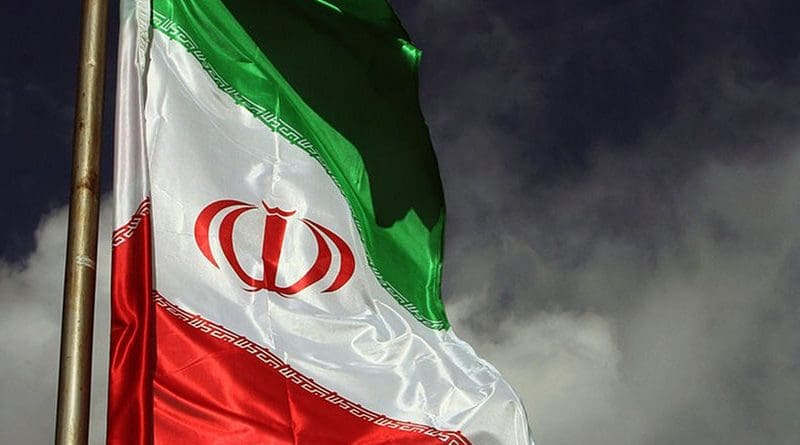Iran’s Economy At The Edge Of The Precipice – OpEd
The World Bank has presented a disturbing report on Iran’s economy, indicating that each sector is currently in a critical state and facing a potential disaster soon. On January 26, the state-run Rouydad 24 news website covered the contents of this report and indirectly warned the regime, with a prediction of a grim future. The article asked: “How has Iran’s economy come to the brink of a precipice?”
While international economic institutions such as the World Bank and the International Monetary Fund have long been criticized for appeasing the ruling regime in Iran and turning a blind eye to the blatant realities of the country’s economic situation by relying on manipulated statistics and the regime’s engineered narratives to downplay crises, they have gradually distanced themselves from this flawed approach in recent times.
The World Bank considers Iran’s statistics unreliable
On November 13, the Fardaye Eghtesad news website wrote,
“The World Bank has been comparing the statistical performance of governments by collecting a large set of indicators for several years. According to the evaluation of this international institution, Iran has a weaker statistical performance (SPI) compared to over 60% of countries worldwide. It is common in Iran’s economic space to witness protests the non-disclosure of statistics by the government or the provision of low-quality data. Recently, we have seen longer and more irregular statistical cover up and the presentation of certain national data.”
The precipice
On March 4, 2023, Tejarat News website wrote, “Iran’s economy is currently in an extremely critical state. We live in a country where chronic and escalating inflation, chronic unemployment, the normalization of budget deficits, and continuous currency depreciation are distinctive features of its economy. What we are experiencing today is unprecedented in the world, and this situation has made it unpredictable and insecure. Among the less discussed aspects are the disturbing psychological effects of these conditions. The increase in stress levels, the rise in anxiety, and depression among individuals living in Iranian society are concerning.”
How Iran’s economy deteriorated
According to the World Bank’s report on Iran’s current economy, over 60% of it is being managed in a centralized and command-driven manner, with a significant portion of exports relying on oil and gas. The analysis in this report highlights several key issues.
On January 26, Bahar news website, wrote, “The economic crisis refers to a widespread occurrence, not a managerial or personal crisis. It is a condition in which the value of the currency decreases, income declines, gross domestic product (GDP) decreases, and companies and financial institutions face bankruptcy. The difference between an economic crisis and a recession is that a recession involves consecutive negative economic growth for two quarters or more, lasting for one or several years.”
Furthermore, the first impact of the economic crisis has been rampant inflation. In contrast, during a recession, inflation tends to stabilize to some extent, and its rate of change slows down.
Bahar news continued, “The international sanctions resulting from the regime’s fundamentalism, terrorism, and warmongering have further contributed to the causes. Within the country, the increasing authoritarianism and the narrowing of the domestic space have led many elites to leave the country. As a result, the country has fallen into the hands of individuals who lack any experience or expertise in governing, even under normal circumstances.”
The World Bank acknowledges that the recent economic growth in Iran has been dependent on the export of oil and other semi-processed derivatives, but it has not contributed to job growth or improving the well-being of Iranians.
It added that according to estimates, 28.1% of Iranians are considered poor, and two-thirds of Iranian households are at risk of falling into poverty. The combination of these factors has led the World Bank to describe the outlook for Iran’s economy as constrained due to sanctions, affected by climate change, facing electricity and gas shortages, and impacted by reduced global demand. The cumulative effect of these economic challenges has led to social and economic discontent in the long run.
Urgent need of economic reforms
On January 26, Rouydad 24 news website wrote, “The World Bank, in its report, recommends immediate economic reforms to address both stated and unstated issues. It acknowledges that Iran has faced a continuous phenomenon of capital flight for the seventh consecutive year.
The detailed sections of the World Bank report reflect the economic crisis and its recommendations to the current regime in Iran regarding optimization measures to prevent the hindering of growth and development, and to improve the livelihoods of millions of Iranians. The report further warns that Iran’s economic outlook is facing serious risks, including intensified social tensions, geopolitical tension”.
Following these intolerable tensions, the only solution, in the opinion of the masses under pressure in Iran, is the overthrow of this oppressive and criminal regime to end this horrendous dilemma.

